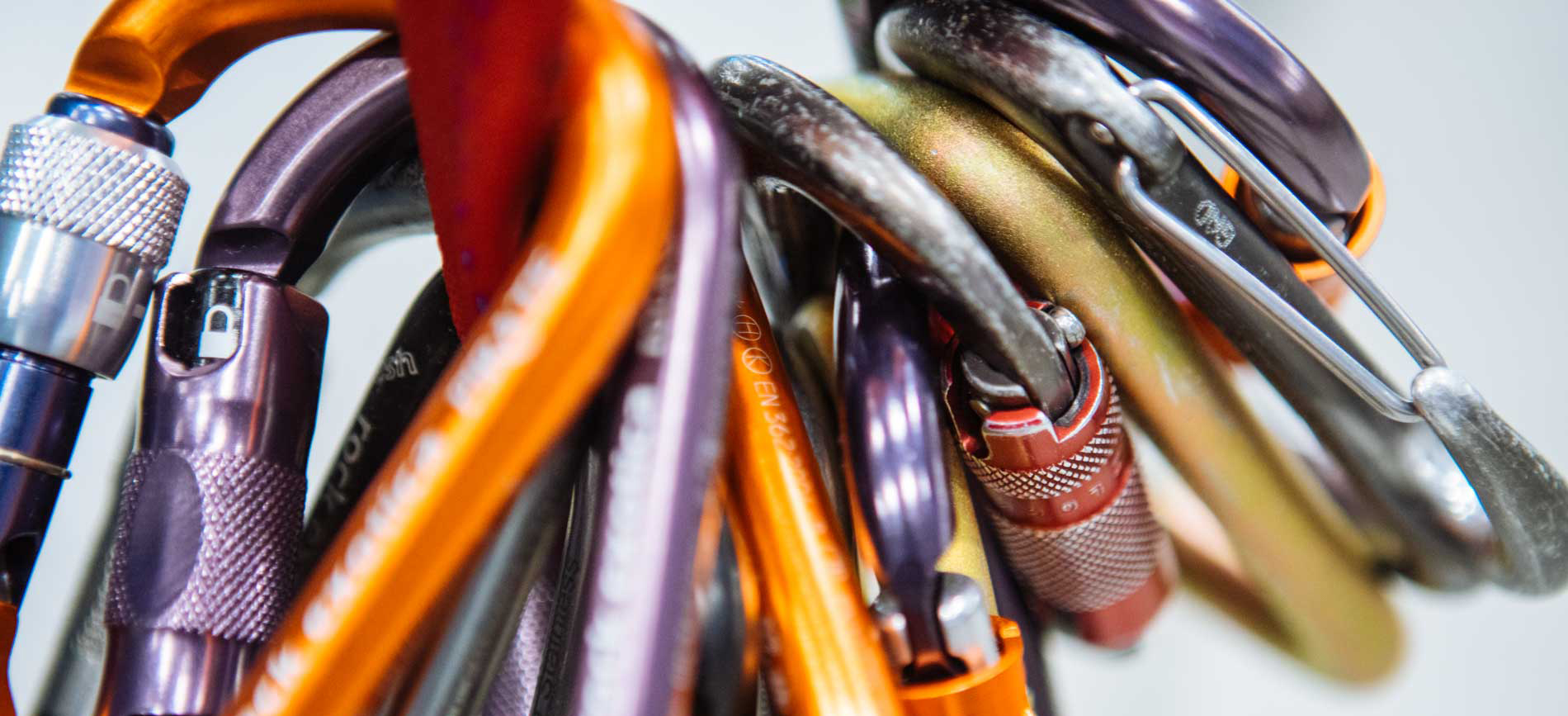Your cart is currently empty!
Carabiners, Snaphooks, and Kilonewtons

Types of fall protection connectors
Dependable connecting hardware is essential to any fall arrest and restraint system. We’ll show you some of the most common connectors in fall protection. We’ll also explain what a kN is and why it’s so important.
Snaphooks
Snaphooks are the most common type of connector. They consist of a forged metal hook that closes by means of a spring-loaded gate. Standard snaphooks are usually five or six inches long with a ¾” gate opening. Standard snaphooks are usually attached to fall protection equipment by means of the line being looped through a captive eye and terminated.
Carabiners
Carabiners are more versatile than snaphooks because they are independent from other system components. A carabiner consists of a single metal shaft bent into a C-shape with a spring-loaded gate closing the gap.
Screw or Barrel-Lock Carabiners
These use a gate that consists of a threaded steel shaft surrounded by a threaded cylinder. The cylinder must be screwed to open and close the gate. In our experience, an overwhelming majority of these carabiners are left open when used in fall protection.
Gravitec does not recommend screw-lock carabiners for fall protection.
Auto-Locking Carabiners
These devices require you to twist a spring-loaded sleeve on the gate ninety degrees before pulling in. When the gate is released, a spring causes it to snap back into place and lock automatically.
HIGHLY RECOMMENDED: PenSafe Kwicklock Steel Carabiner
Double-Locking Carabiners
these devices require three separate actions to open their gates, typically: lifting the sleeve free of the shaft, rotating ninety degrees and pulling open. While the three actions can take some time to get used to, these are the most secure carabiners for fall protection.
HIGHLY RECOMMENDED: DMM Big Boa Kwicklock Carabiner
Carabiner Markings and kN Rating
Proper fall protection equipment is designed to absorb the force that’s generated by a fall. Your carabiner comes with a certain rating of force it can withstand—usually marked in kN, or kiloNewton. 1 kiloNewton is equal to 224.8 pounds of force, so you can typically multiply the kN rating by 225 to get the rating in pounds.
The standard design requirement states that carabiners must maintain, at a minimum, 5,000 lbs (22.2kN) along the major axis and 3,600 lbs (16kN) across the gate. For a short-hand, look for the ANSI Z359.12 stamp on your carabiner. If you don’t see one, take a look at our wide assortment of ANSI Compliant carabiners or call one of our Equipment Advisors at 800.755.8455.